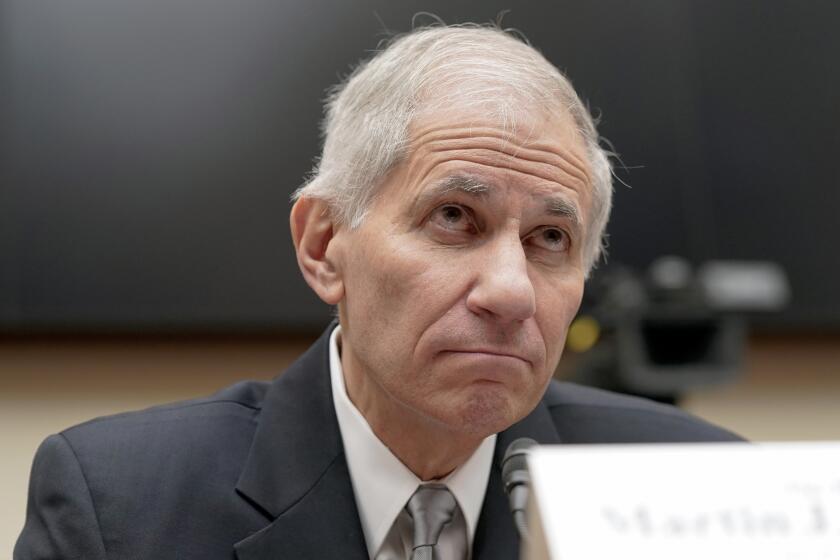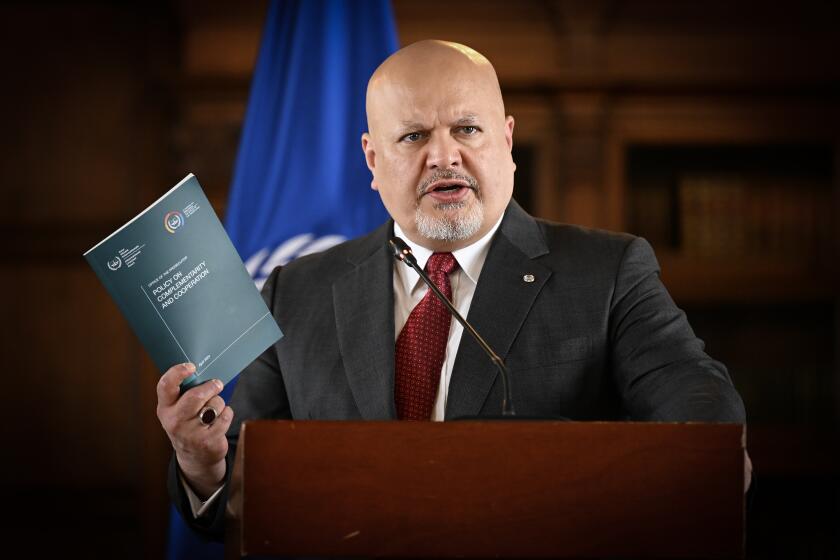Mexico Plans Early U.S. Loan Repayment
A euphoric Mexican government announced Thursday that it will shortly repay two-thirds of the $10.5 billion it still owes the United States, an unexpectedly early payback that reflects a surge in investor confidence in Mexico and points toward success for the Clinton administration’s much-criticized bailout of the southern neighbor.
The repayment three years ahead of time was made possible by a wildly successful bond sale by the Mexican government that attracted $6 billion--twice what was expected--from foreign banks, insurance companies and even U.S. mutual funds.
In all, the Mexicans promised to repay $7 billion of the remaining debt from what was the largest U.S. foreign aid package since the Marshall Plan. The money will enter government coffers on Aug. 5.
The bond sale, one of the largest single issues ever done by a government, came less than two years after the Mexican economy entered a free fall that threatened the nation’s solvency and whose effects rippled through emerging nations worldwide.
“This is a grand slam,” exulted Alejandro Valenzuela, the chief government spokesman for economic affairs.
And in Washington, administration officials viewed Mexico’s announcement as a ringing vindication of their controversial bailout plan for Mexico in early 1995.
“With nearly three-quarters of the debt about to be repaid, we can say that default has been averted, the Mexican economy is beginning to recover and our exports to Mexico are running at an all-time high,” declared U.S. Treasury Secretary Robert E. Rubin. “The strategy is working.”
The rescue plan, unveiled at a time when Mexico’s financial markets were being hammered, sparked criticism that the White House really was bailing out Wall Street investors who were taking a beating in Mexico and should not be shielded from the risks of financial markets.
Administration officials have argued that the United States retains vital interests in a stable Mexico--most notably in the form of a secure border and growing economic ties between the two nations.
Mexico initially announced last month that it would prepay about $4.7 billion of the U.S. emergency loan. But demand for its new five-year notes, backed by the country’s oil revenues, surged beyond the government’s highest expectations. Planning to sell $3 billion, Mexico got orders for three times that amount.
The government decided to sell just $6 billion and watch how the notes perform, officials said.
Mexico also announced it would make an early payment of $1 billion to the International Monetary Fund, which organized the international bailout program last year along with the United States and lined up emergency credit totaling $50 billion.
Analysts said the giant sale of dollar-denominated notes was a testimony, in part, to the government’s success in stabilizing Mexico’s economy.
In the last few months, inflation has nose dived, dollar-generating exports have surged and the peso has steadied. The government is expected to soon proclaim the end of the country’s worst recession in 60 years.
To be sure, the notes’ popularity reflected more than Mexico’s recovery. The investments offered an ironclad guarantee: If investors didn’t get paid, they could lay claim to Mexico’s huge oil revenues, which flow through an account in the Federal Reserve Bank of New York.
Thanks to that guarantee, the notes were awarded investment-grade status. With that seal of approval, such conservative institutions as U.S. pension funds and insurance companies could invest.
However, analysts said investors wouldn’t have moved in such numbers without confidence that Mexico’s balanced budget and strong dollar earnings from exports will enable it to make its interest payments in dollars.
“Virtually every major U.S. fund that could took $100 million,” said Darryl McLeod, chief Latin America economist for Lehman Bros., the Wall Street brokerage house.
“This is virtually guaranteed U.S. debt, both because of the way the oil revenues are channeled through New York, and the fact that the U.S. government has stood behind Mexico in the past.”
Mexican officials said the giant offering has also brought dozens of foreign banks back to Mexican turf. They said some of the 200 banks that sold the bonds worldwide bought large chunks of the offering for themselves. In effect, many foreign banks that had avoided Mexico since the debt crisis of the 1980s are returning to lend here, the officials say.
Mexico initially borrowed $13.5 billion of the $20 billion U.S. credit line. It has already repaid $3 billion.
Although critics accused the U.S. government of providing a giveaway to Mexico, Washington has actually made money on the emergency loan--some $1.2 billion in interest payments.
“Everyone thinks of the U.S. bailout program as a subsidy, but in fact they [Mexicans] were paying very high interest rates,” McLeod said.
In converting much of its U.S. loan into debt owned by private investors, Mexico expects to save about $125 million in interest a year. It also will stretch out the length of its debt, from 3.5 to 7.9 years, thus avoiding a crush of repayments at the end of this century.
The notes sold in the latest offering, pegged to the London Inter-Bank Offer Rate, will currently pay about 7.6% but will rise and fall with world interest rates.
More to Read
Start your day right
Sign up for Essential California for news, features and recommendations from the L.A. Times and beyond in your inbox six days a week.
You may occasionally receive promotional content from the Los Angeles Times.






